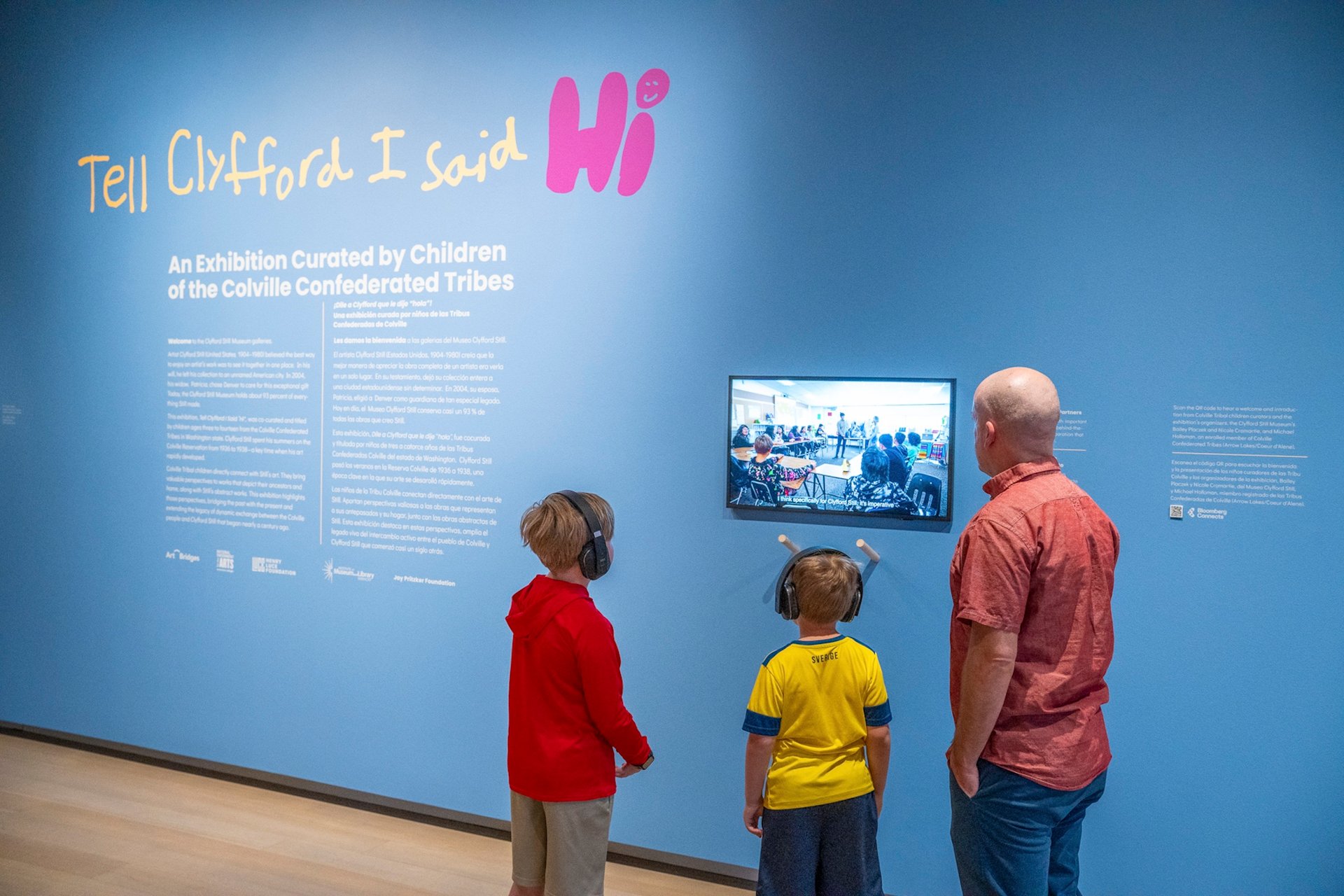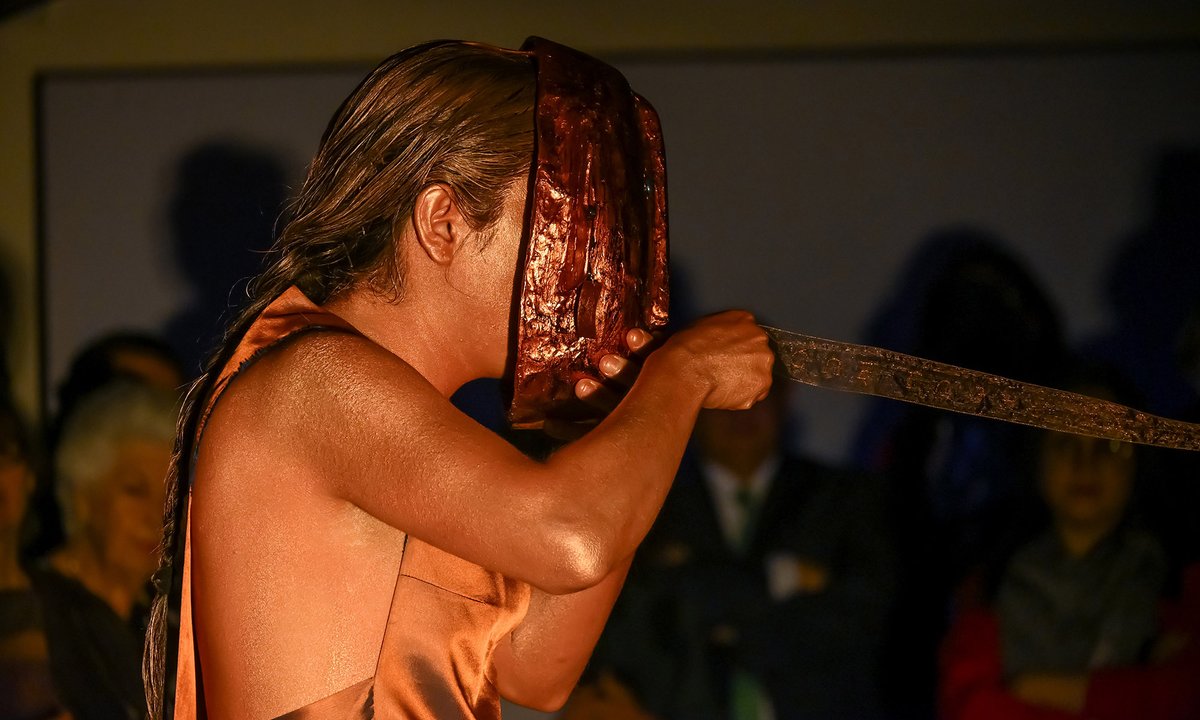Many US museums are adapting their programmes to avoid clashing with the federal government’s turn against diversity, equity and inclusion initiatives. Despite such anxieties, the Clyfford Still Museum has yielded curatorial authority to 100 children of the Confederated Tribes of the Colville Reservation for the exhibition Tell Clyfford I Said “Hi” (until 10 May 2026). The show highlights how museums can be spaces for community and historical research while also exploring themes of identity and agency.
In 1936, the artist Clyfford Still (1904-80) was a young art professor at what is now Washington State University. He and his colleague Worth Griffin travelled from Pullman, Washington, to the towns of Nespelem and Toppenish to explore the landscape and document members of the Colville Confederated Tribes. Still produced more than 100 works and photographs, recording his experiences in his journal. The following year, Griffin and Still returned to establish a summer art colony.
Visual records
Works of this era were first exhibited at the Clyfford Still Museum in 2015 in Clyfford Still: The Colville Reservation and Beyond, 1934-1939. Michael Holloman, an associate professor at Washington State University and enrolled member of the Colville Indian Reservation, supported this collection by researching Still’s images as important visual records of the reservation and connecting his portraits to the sitters’ descendants.

Visitors to “Tell Clyfford I Said ‘Hi’” at the Clyfford Still Museum Photo: Brent Andeck. Courtesy Clyfford Still Museum
In 2022, Holloman and Bailey Harberg Placzek, the curator of the museum’s collections and the current exhibition, travelled to Nespelem to meet John Sirois (the traditional territories co-ordinator for the Confederated Tribes of the Colville Reservation) and the family members of the people who sat for Still’s portraits. For several months after that visit, Sirois, Placzek and Holloman discussed how best to expand their partnership.
Out of the mouths of babes
“We really wanted to involve tribal youth,” Placzek says. “None of this really means anything if it can’t be shared with the next generation.”
Nicole Cromartie, the museum’s director of learning and the exhibition’s co-curator, and Placezk had recently completed an exhibition in which the art was selected by babies and children up to six years of age. That curatorial approach, in which pre-verbal babies indicated selections through vocalisations or extended looking, was considered groundbreaking by the American Alliance of Museums for modelling intuitive understanding of abstract art. The curators spent six months attending Colville community events in Washington, while working with other Colorado Indigenous organisations to formulate best practices.
With approval by the Colville Tribal Council, Cromartie and Placezk started reaching out to schools, three of which agreed to partner on an exhibition: Nespelem School, Nespelem Head Start and Hearts Gathered Montessori, totalling 100 student participants aged 3 to 14. When Placzek and Cromartie returned in 2024, they brought 200 facsimiles of the museum’s collection including 100 paintings spanning the 1930s to the 70s to represent a sample of Still’s career as well as Colville photographs and art. For decades, scholars debated the reservation’s impact on Still’s leap to abstraction, but the children at the Nespelem School immediately saw a connection. When a fifth-grade student named Kloey saw the 1971 painting PH-796 she observed that its colour and design reflected a pow wow blanket. Classmates looked closely and agreed. “It was just incredible to hear this child be like, ‘This is us,’” Cromartie says. “It was so matter of fact and confident.”
Tracing connections
The students were also astounded by landscapes that have changed and those that remain familiar, such as the 1936 painting PH-450 of B Street in Grand Coulee, Washington. A fifth grader named Nikolai identified the buildings in the frame and their current tenants. The US was in the depths of the Great Depression for most of the 1930s, and that scarcity did not spare the reservation. Holloman says Still’s journal entries from the time remark on the vast timber resources untapped by the impoverished local population. It would be several more decades, until after the landmark 1974 case United States v. Washington, that tribal self-governance was affirmed and the Colville Tribes gained authority over social services, finances and eventually the building of a lumber mill.

A student curator speaks about a work he selected for “Tell Clyfford I Said ‘Hi’” at the Clyfford Still Museum Photo: Brien Hollowell. Courtesy the Clyfford Still Museum
Museum exhibitions that share intellectual authority with the communities they represent are rare, but not new, Cromartie says. The show Grounded in Clay—which was recently at the Metropolitan Museum of Art in New York and will open next year at the Indian Pueblo Cultural Center in Albuquerque, New Mexico—invited Pueblo community members to select a piece of pottery and write an accompanying story. Those narratives shaped a cohesive presentation and served as a model for the Clyfford Still Museum.
Seizing the day
Nine Colville students and their families travelled from Nespelem to Denver for the exhibition’s opening, each wearing shirts emblazoned with “CURATOR”. One student seized the podium microphone and said, “Come see my painting,” in reference to the Still work he had selected to exhibit and discuss in the wall text. Another student boasted: “The curator is here.”
“Clyfford Still was with us, he was on our reservation,” Holloman says. “He was in our homelands and these are our ancestors. He drew how we are as a community.”
- “Tell Clyfford I Said ‘Hi’”: An Exhibition Curated by Children of the Colville Confederated Tribes, until 10 May 2026, Clyfford Still Museum, Denver







